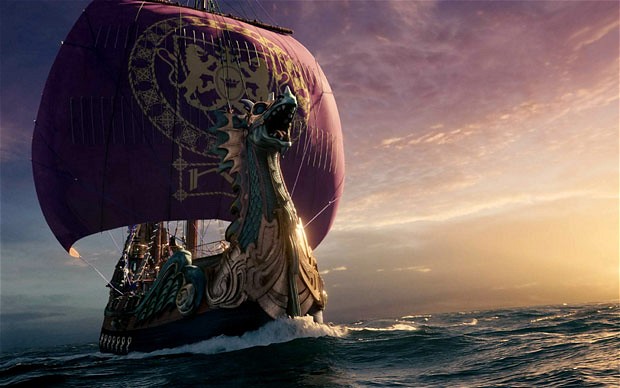What A Beloved Narnia Story Tells Us About The Star Of Bethlehem
In CS Lewis' novel The Voyage of the Dawn Treader, Edmund, Lucy and their obnoxious cousin Eustace fall into the magical world of Narnia again through a painting on their wall of a ship at sea. It's the Dawn Treader, and on board is Prince Caspian. They have all sorts of exciting adventures before they arrive safely home again.

One of them involves a meeting with a friendly wizard on an island inhabited by invisible monopods. Another is when they are almost at the end of the world, and they meet a strange old man and his daughter. Every day a bird brings the man something like a live coal and puts it in his mouth. It is a fire-berry from the valleys in the sun, and every day it takes away a little of his age.
It turns out that he is a "retired star", who set for the last time and was carried to the island to grow young again. The wizard, Koriakin, turns out to have been a star as well, exiled to his island as a punishment.
"'In our world,' said Eustace, 'a star is a huge ball of flaming gas.'"
"'Even in your world, my son, that is not what a star is but only what it is made of,'" says Ramandu.
In saying that, Lewis was drawing on a very old tradition from the philosophy of Plato. But the idea that stars were not just balls of flaming gas but were actually alive was common in antiquity. In Jewish writings they were associated with angels.
So what we are probably meant to understand by the story of the star stopping over the place where Jesus was born is not a comet or a meteor, or anything astronomical at all, but something more like an angel. And in terms of the story this makes far more sense: the biblical writers knew perfectly well that stars didn't behave like this, but they were quite willing to believe angels did.
But of course, what's really important about the story is not how the magi were guided to Bethlehem, but what they found when they got there. And the point of the story is that the Gentiles too came to worship; the wisdom of the East bowed down before an infant human child who was the Saviour of the World.
Follow Mark Woods on Twitter: @RevMarkWoods











